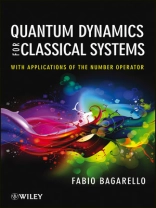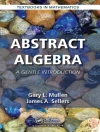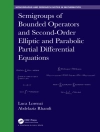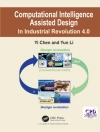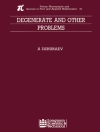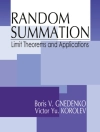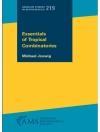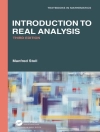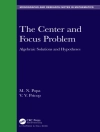Introduces number operators with a focus on the relationship
between quantum mechanics and social science
Mathematics is increasingly applied to classical problems in
finance, biology, economics, and elsewhere. Quantum Dynamics for
Classical Systems describes how quantum tools–the number
operator in particular–can be used to create dynamical
systems in which the variables are operator-valued functions and
whose results explain the presented model. The book presents
mathematical results and their applications to concrete systems and
discusses the methods used, results obtained, and techniques
developed for the proofs of the results.
The central ideas of number operators are illuminated while
avoiding excessive technicalities that are unnecessary for
understanding and learning the various mathematical applications.
The presented dynamical systems address a variety of contexts and
offer clear analyses and explanations of concluded results.
Additional features in Quantum Dynamics for Classical
Systems include:
* Applications across diverse fields including stock markets and
population migration as well as a unique quantum perspective on
these classes of models
* Illustrations of the use of creation and annihilation operators
for classical problems
* Examples of the recent increase in research and literature on
the many applications of quantum tools in applied mathematics
* Clarification on numerous misunderstandings and misnomers while
shedding light on new approaches in the field
Quantum Dynamics for Classical Systems is an ideal
reference for researchers, professionals, and academics in applied
mathematics, economics, physics, biology, and sociology. The book
is also excellent for courses in dynamical systems, quantum
mechanics, and mathematical models.
Table des matières
PREFACE xi
ACKNOWLEDGMENTS xv
1 WHY A QUANTUM TOOL IN CLASSICAL CONTEXTS? 1
1.1 A First View of (Anti-)Commutation Rules 2
1.2 Our Point of View 4
1.3 Do Not Worry About Heisenberg! 6
1.4 Other Appearances of Quantum Mechanics in Classical Problems
7
1.5 Organization of the Book 8
2 SOME PRELIMINARIES 11
2.1 The Bosonic Number Operator 11
2.2 The Fermionic Number Operator 15
2.3 Dynamics for a Quantum System 16
2.3.1 Schr¨odinger Representation 17
2.3.2 Heisenberg Representation 20
2.3.3 Interaction Representation 21
2.4 Heisenberg Uncertainty Principle 26
2.5 Some Perturbation Schemes in Quantum Mechanics 27
2.5.1 A Time-Dependent Point of View 28
2.5.2 Feynman Graphs 31
2.5.3 Dyson’s Perturbation Theory 33
2.5.4 The Stochastic Limit 35
2.6 Few Words on States 38
2.7 Getting an Exponential Law from a Hamiltonian 39
2.7.1 Non-Self-Adjoint Hamiltonians for Damping 42
2.8 Green’s Function 44
I SYSTEMS WITH FEW ACTORS 47
3 LOVE AFFAIRS 49
3.1 Introduction and Preliminaries 49
3.2 The First Model 50
3.2.1 Numerical Results for M >1 54
3.3 A Love Triangle 61
3.3.1 Another Generalization 66
3.4 Damped Love Affairs 71
3.4.1 Some Plots 76
3.5 Comparison with Other Strategies 80
4 MIGRATION AND INTERACTION BETWEEN SPECIES 81
4.1 Introduction and Preliminaries 82
4.2 A First Model 84
4.3 A Spatial Model 88
4.3.1 A Simple Case: Equal Coefficients 90
4.3.2 Back to the General Case: Migration 95
4.4 The Role of a Reservoir 100
4.5 Competition Between Populations 103
4.6 Further Comments 105
5 LEVELS OF WELFARE: THE ROLE OF RESERVOIRS 109
5.1 The Model 110
5.2 The Small lambda Regime 116
5.2.1 The Sub-Closed System 117
5.2.2 And Now, the Reservoirs! 119
5.3 Back to S 121
5.3.1 What If M = 2? 123
5.4 Final Comments 125
6 AN INTERLUDE: WRITING THE HAMILTONIAN 129
6.1 Closed Systems 129
6.2 Open Systems 133
6.3 Generalizations 136
II SYSTEMS WITH MANY ACTORS 139
7 A FIRST LOOK AT STOCK MARKETS 141
7.1 An Introductory Model 142
8 ALL-IN-ONE MODELS 151
8.1 The Genesis of the Model 151
8.1.1 The Effective Hamiltonian 155
8.2 A Two-Traders Model 162
8.2.1 An Interlude: the Definition of c P^ 163
8.2.2 Back to the Model 164
8.3 Many Traders 169
8.3.1 The Stochastic Limit of the Model 172
8.3.2 The FPL Approximation 177
9 MODELS WITH AN EXTERNAL FIELD 187
9.1 The Mixed Model 188
9.1.1 Interpretation of the Parameters 194
9.2 A Time-Dependent Point of View 196
9.2.1 First-Order Corrections 200
9.2.2 Second-Order Corrections 203
9.2.3 Feynman Graphs 204
9.3 Final Considerations 206
10 CONCLUSIONS 211
10.1 Other Possible Number Operators 211
10.1.1 Pauli Matrices 212
10.1.2 Pseudobosons 213
10.1.3 Nonlinear Pseudobosons 213
10.1.4 Algebra for an M + 1 Level System 215
10.2 What Else? 217
BIBLIOGRAPHY 219
INDEX 225
A propos de l’auteur
FABIO BAGARELLO, Ph D, is Professor in the Department of
Electrical Engineering and Telecommunications, Chemical Technology,
Automatic, and Mathematical Models at the University of Palermo in
Italy. He is the author of over 100 journal articles and has
presented lectures at several international conferences on quantum
probability, functional analysis, operator algebras, wavelets, and
non-hermitian quantum mechanics.
